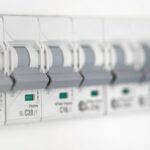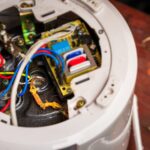Understanding the basics of air conditioning
Air conditioning systems are vital for maintaining comfortable indoor temperatures. These devices work by removing heat and moisture from the air. Modern units offer both cooling and heating capabilities. The efficiency of an air conditioner is measured by its Seasonal Energy Efficiency Ratio (SEER). A higher SEER rating indicates better energy efficiency. Most residential systems have SEER ratings between 13 and 21. Commercial systems often have higher ratings, sometimes exceeding 25 SEER.
There are several types of air conditioning systems available. Central air conditioning is common in larger buildings. It uses a network of ducts to distribute cooled air. Wall air conditioners are popular for single rooms or small spaces. These units are installed directly through walls. Portable air conditioners offer flexibility and can be moved between rooms. Ductless mini-split systems provide zoned cooling without the need for extensive ductwork.
The cooling capacity of air conditioners is measured in British Thermal Units (BTUs). A typical bedroom requires about 6,000 BTUs, while a large living room might need 18,000 BTUs. Proper sizing is crucial for optimal performance and energy efficiency. Oversized units can lead to frequent cycling and increased energy consumption. Undersized units may struggle to cool the space effectively, especially during peak summer temperatures.
Air conditioning technology has advanced significantly in recent years. Inverter technology allows for variable compressor speeds, improving efficiency. Smart thermostats enable precise temperature control and scheduling. Some high-end models feature air purification systems, removing allergens and pollutants. Energy Star certified units can reduce energy consumption by up to 15% compared to standard models.
Selecting the right air conditioning system for your space
Choosing the appropriate air conditioning system requires careful consideration of several factors. Room size is a primary determinant. A general rule is to allocate 20 BTUs per square foot of living space. Ceiling height also impacts cooling requirements. Rooms with high ceilings may need additional capacity. The number and size of windows affect heat gain and should be factored into calculations.
Climate plays a significant role in system selection. Humid regions benefit from units with enhanced dehumidification capabilities. Areas with extreme temperature fluctuations may require systems with both heating and cooling functions. Energy costs vary by region, influencing the choice between high-efficiency and standard models. In some areas, utility companies offer rebates for energy-efficient air conditioning installations.
Consider the installation requirements of different systems. Central air conditioning typically requires professional installation and ductwork. Wall air conditioners need a suitable exterior wall for mounting. Ductless mini-split systems offer easier installation but may have higher upfront costs. Portable units are the simplest to install but may not be as efficient for larger spaces.
Budget is an important consideration when selecting an air conditioning system. Initial costs can range from $150 for a small window unit to over $10,000 for a whole-house system. Operating costs should also be factored in. High-efficiency units may have higher upfront costs but can lead to significant long-term savings. Some manufacturers offer financing options to help spread the cost of installation.
Maintaining your air conditioning system for optimal performance
Regular maintenance is crucial for ensuring the longevity and efficiency of air conditioning systems. Air filters should be cleaned or replaced monthly during heavy use periods. Dirty filters can reduce airflow by up to 15%, decreasing efficiency. Outdoor units should be kept clear of debris and vegetation. A clearance of at least 2 feet around the unit is recommended for proper airflow.
Professional servicing is recommended annually for most systems. This typically includes checking refrigerant levels, cleaning coils, and inspecting electrical components. A well-maintained system can operate up to 15% more efficiently than a neglected one. Some manufacturers require regular professional maintenance to maintain warranty coverage.
Thermostat settings significantly impact energy consumption. The U.S. Department of Energy recommends setting the thermostat to 78°F (26°C) when you’re at home and need cooling. Programmable thermostats can automatically adjust temperatures based on your schedule. Each degree of cooling below 78°F can increase energy consumption by 3-4%.
Pay attention to unusual noises or odors from your air conditioning system. Strange sounds may indicate loose components or motor issues. Musty odors could signal mold growth in the system. Prompt attention to these issues can prevent more serious problems. Many commercial air conditioners have built-in diagnostic systems to alert users to potential issues.
Energy-saving tips for air conditioning use
Proper insulation is key to maximizing air conditioning efficiency. Sealing air leaks around windows and doors can reduce cooling costs by up to 15%. Adding insulation to attics and walls can further improve energy efficiency. In hot climates, reflective roof coatings can reduce heat absorption by up to 80%.
Utilizing ceiling fans in conjunction with air conditioning can enhance comfort and reduce energy use. Fans create a wind-chill effect, making rooms feel up to 4°F cooler. This allows you to set the thermostat about 4°F higher without affecting comfort. Fans should be turned off when leaving the room to conserve energy.
Strategic use of window coverings can significantly reduce heat gain. Closing blinds or curtains during the hottest parts of the day can block up to 65% of heat. Reflective window films can reduce heat gain by up to 70%. Exterior shading devices, such as awnings or overhangs, can be even more effective.
Minimizing heat-generating activities during peak temperatures helps reduce the load on air conditioning systems. Using the oven or dryer in the evening can prevent unnecessary heat buildup. Energy-efficient LED bulbs generate less heat than traditional incandescent bulbs. Proper ventilation in kitchens and bathrooms helps remove heat and humidity more efficiently.
Exploring alternatives and complementary systems
Evaporative coolers, also known as swamp coolers, offer an energy-efficient alternative in dry climates. These systems can use up to 75% less energy than traditional air conditioners. They work by passing air over water-saturated pads, cooling the air through evaporation. However, they are less effective in humid environments.
Heat pumps provide both heating and cooling capabilities. In moderate climates, they can be up to 50% more efficient than traditional heating and cooling systems. Ground-source heat pumps, which use the earth’s constant temperature, can be even more efficient. However, they have higher installation costs.
Whole-house fans can be an effective complement to air conditioning systems. These fans draw cool air in through open windows and expel hot air through the attic. They are most effective in the evening when outdoor temperatures drop. A typical whole-house fan uses about 10% of the energy of central air conditioning.
Air conditioning and ventilation systems can work together to improve indoor air quality. Energy recovery ventilators (ERVs) exchange stale indoor air with fresh outdoor air while maintaining temperature and humidity levels. This can reduce the load on air conditioning systems while improving indoor air quality. ERVs can recover up to 80% of the energy from the exhausted air.





